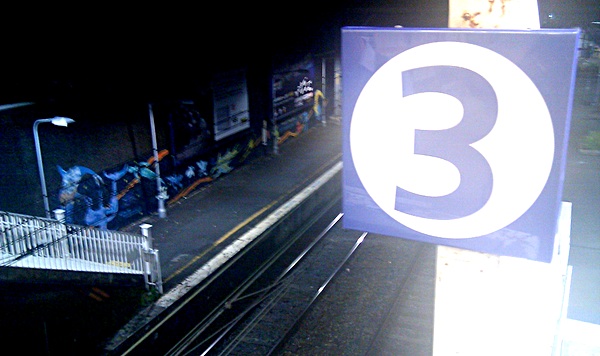A weekly summary of what I’ve been doing elsewhere on the internets and in the media and so on and so forth — and this week it seems like I’ve been consuming more food and drink than producing media.
Articles
- NBN Co business case — truly a curiously inadequate document, for Crikey. The “curiously inadequate” line is a quote from opposition spokesperson Malcolm Turnbull’s blog post about the rather odd NBN Co Business Case Summary [3MB PDF], which contains neither business nor case. This article will sit behind the Crikey paywall for two weeks, but you can register for a free trial. Or you can comment over here.
- “Gadgets: a geek’s Christmas”, part of the Crikey Weekender Christmas Guide 2010 [2.9MB PDF]. This was actually published on 19 November but I forgot to mention it last week. So sue me.
Podcasts
- Patch Monday episode 66, “Inside the internet’s China syndrome”. A conversation with infosec specialist Crispin Harris about that story of China supposedly hijacking 15% of the world’s internet traffic for 18 minutes back in April. Needless to say, the story is somewhat of an exaggeration. I’m pleased with the opening montage on the program.
Media Appearances
None.
Corporate Largesse
With six bullet points in this section — four of them from the one day! — and it still being November, there’s clear evidence that my liver may not survive until the actual day of Christmas. Wish me luck.
- The Australian Communication Consumer Action Network (ACCAN) fed me lunch while I gave them a briefing on the National Broadband Network on Tuesday. My largess to them is probably worth more than theirs to me.
- I had cakes and other sweet items while attending the eCrime Symposium on Thursday. The organisers also gave me a bottle of Yering Station pinot noir.
- AARNet paid for lunch at Est Restaurant while their CEO Chris Hancock gave us a briefing on their plans on Thursday.
- Nate Cochrane, editor in chief for some of Haymarket Media’s mastheads in Australia including iTnews.com.au, bought me a couple of beers while we discussed the media industry in Australia and the future of journalism.
- I popped into a drinks session being staged by Securis Global, and they bought me a couple of beers.
- Continuing the busy Thursday, I went to the CBS Interactive Christmas Party at The Italian Village in The Rocks. ZDNet.com.au is one of their mastheads and I file stories for them, so I’m not sure if this actually counts. But someone from one of Microsoft’s PR firms bought me a double scotch, so that definitely counts.
Elsewhere
Most of my day-to-day observations are on my high-volume Twitter stream, and random photos and other observations turn up on my Posterous stream. The photos also appear on Flickr, where I eventually add geolocation data and tags.
[Photo: A platform sign at Erskineville station, Sydney. I have no idea why I took this photograph, so obviously you need to see it too.]


@stilgherrian What’s with Platform 3 at Erskineville Station ? According to Wikipedia
http://en.wikipedia.org/wiki/Erskineville_railway_station,_Sydney
Platform 3 is not in regular use Illawarra line and East Hills line trains pass without stopping BUT “trains stop during trackwork”
Now it should be remembered that railway networks are networks – much like the National Broadband Network or the telephone network. High level mathematics are used – even to determine whether trains should stop at Platform 3.
Watch Wikileaks for further details of the forumula !
(my tweets are being censored)
Bob
Addendum: “Now it should be remembered that railway networks are networks”
Here’s an example from Switzerland:
http://www.ifor.math.ethz.ch/research/networks/railway/indepSet
—————————
A question of interest for railway operators is to know several possible variations of lines for routing trains in and out of a station. Knowing alternatives helps for example in planning track revisions. It is relatively easy to find all possibilities of routing a single train for a given track topology. Yet, finding a combination of routes for all trains of the timetable in a fashion that they respect all safety constraints is difficult.
A feasible train routing is found in the following way. Applying a path search algorithm all possible routes for each train are enumerated. Each of these pathes is then represented by a node in a graph and two nodes are connected if they represent two train routes that are incompatible, eg the trains use the same track somewhere at the same time. An independent set in this graph gives a conflict free routing of trains. Since all possibilieties of the same train are connected the result is a graph consisting of large cliques. As a consequence a tight upper bound for the independent set problem is known a priori—the number of trains of the timetable. If the maximum independent set is smaller than this upper bound, the timetable is infeasible since not all trains can be scheduled.
——————————
Platform 3 at Erskineville is possibly a “node on a graph”. Come the NSW Election in March 2011 the incoming government may ask questions with regards to nodes on the graph and Platfrom 3 may be “free” once again.
Bob